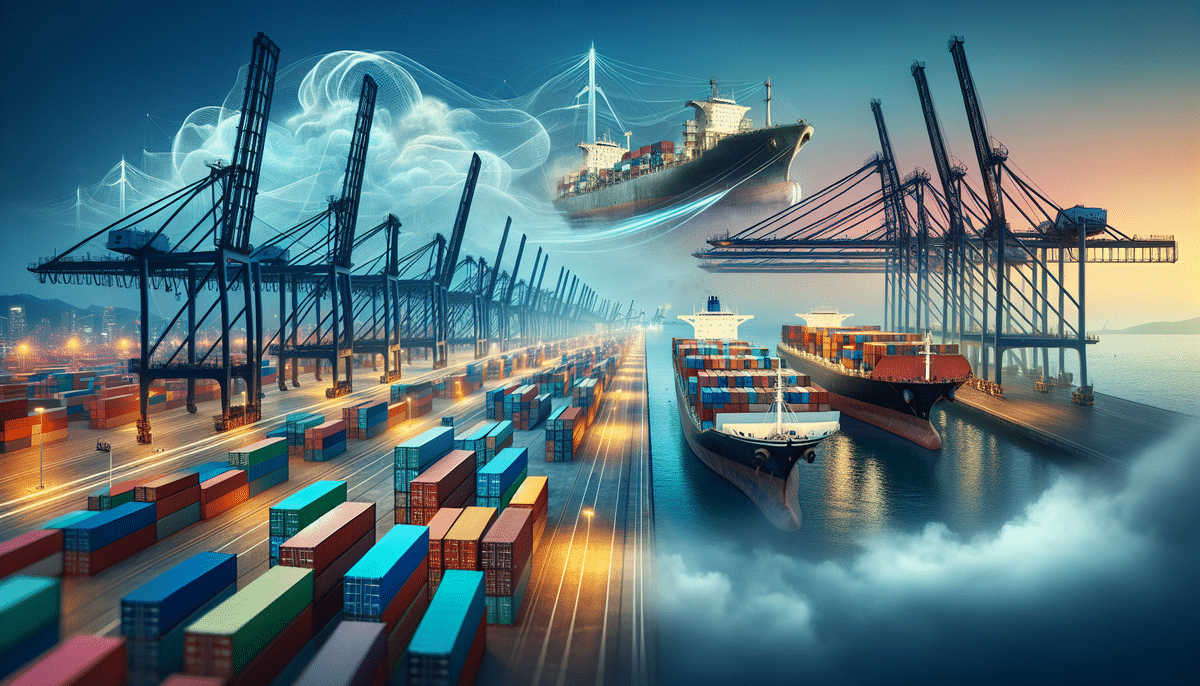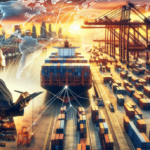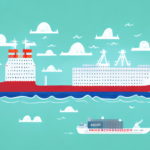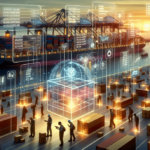Introduction to Commercial Shipping
Commercial shipping is a cornerstone of international trade, facilitating the movement of goods across continents and connecting global markets. This complex industry involves multiple stakeholders, including shipping companies, ports, freight forwarders, and various intermediaries. As of 2023, commercial shipping accounts for approximately 80% of global trade by volume, underscoring its critical role in the global economy. This article provides a comprehensive overview of the commercial shipping industry, covering its history, types, economic dynamics, globalization effects, advantages and disadvantages, technological advancements, major ports, environmental challenges, and future trends. By the end, readers will gain a solid understanding of the essential functions and impacts of commercial shipping in today's world.
The Evolution of Commercial Shipping: From Ancient Vessels to Modern Giants
The origins of commercial shipping trace back to ancient civilizations that used wooden boats to transport spices, silk, and other commodities across bodies of water like the Mediterranean Sea, Red Sea, and Indian Ocean. These early endeavors laid the foundation for maritime trade, which expanded significantly during the Age of Exploration in the 15th and 16th centuries. European powers such as Spain, Portugal, and the Netherlands established extensive colonies and trading networks, leveraging their naval capabilities to protect and monopolize lucrative trade routes.
The Industrial Revolution in the 18th and 19th centuries marked a transformative period for commercial shipping, introducing steam engines, iron-hulled ships, and transatlantic trade. This era saw the rise of modern shipping companies and the development of liner and tramp services, which revolutionized cargo transportation. Today, the industry has evolved into a global behemoth, with modern container ships capable of carrying over 24,000 TEUs (Twenty-foot Equivalent Units) and transporting a vast array of goods ranging from raw materials to high-tech electronics.
Types of Commercial Shipping
Commercial shipping is categorized based on the nature of the cargo and the mode of transportation. The primary types include:
- Cargo Shipping: Involves the transportation of bulk or breakbulk commodities such as coal, grain, ore, lumber, and steel. Cargo ships vary in size and specialization, including dry bulk carriers, general cargo vessels, and specialized carriers.
- Container Shipping: Utilizes standardized containers that streamline loading and unloading processes. Container shipping has significantly enhanced efficiency and intermodal transport capabilities, allowing seamless transfers between ships, trucks, and trains.
- Tanker Shipping: Focuses on transporting liquid or gaseous cargoes like oil, natural gas, chemicals, and liquefied natural gas (LNG). Tankers are equipped with specialized tanks and pumping systems to handle these substances safely, although they pose environmental risks such as spills and leaks.
- Passenger Shipping: Dedicated to transporting people for leisure or business purposes. This category ranges from small ferries and riverboats to large cruise liners and ocean liners, offering various amenities and services to passengers.
Specialized Shipping Types
- Roll-on/Roll-off (RoRo) Shipping: Designed for transporting wheeled cargo like cars, trucks, and trailers, allowing for easy loading and unloading directly onto the vessel.
- Reefer Shipping: Specialized in transporting perishable goods with temperature-controlled environments to maintain product quality during transit.
Economic Impact of Commercial Shipping
The economics of commercial shipping are multifaceted, involving the interplay of revenue, costs, and profitability within a highly competitive and dynamic market. As of recent data, global shipping accounts for a significant portion of GDP, with estimates suggesting that the industry contributes over $4 trillion annually to the global economy.
Revenue Streams
Shipping companies primarily generate revenue through freight rates, which are charged based on the type and volume of cargo, distance traveled, and prevailing market conditions. Factors influencing freight rates include fuel prices, vessel availability, seasonal demand fluctuations, and geopolitical events. For instance, the Baltic Dry Index is a key indicator used to assess the cost of shipping raw materials, reflecting market demand and supply dynamics.
Operational Costs
Key cost components for shipping companies encompass vessel acquisition and maintenance, fuel and lubricants, crew salaries, port fees, insurance, and regulatory compliance. The volatility of fuel prices, particularly Bunker Fuel, significantly impacts operational expenses. Additionally, adhering to environmental regulations, such as the International Maritime Organization's (IMO) 2020 sulfur cap, entails additional costs for fuel upgrades or scrubber installations.
Profitability and Market Challenges
Shipping companies strive for profitability by optimizing fleet utilization, enhancing fuel efficiency, and employing cost-effective routing strategies. However, the industry faces challenges like overcapacity, fluctuating demand, and intense price competition. To mitigate risks, companies often engage in strategic alliances and consolidate fleets to achieve economies of scale.
Globalization and Its Impact on Commercial Shipping
Globalization has profoundly reshaped the commercial shipping landscape by increasing the volume and complexity of international trade. The seamless integration of global supply chains has led to a surge in maritime traffic, particularly in container shipping, which has grown exponentially to meet the demands of interconnected markets.
Emerging Markets and Trade Expansion
The rise of emerging economies such as China, India, and Brazil has expanded import and export markets, driving demand for shipping services. China's Belt and Road Initiative, for example, aims to enhance global trade routes, including maritime corridors, which has significant implications for shipping patterns and port development.
Challenges Posed by Globalization
While globalization offers opportunities, it also introduces challenges such as overcapacity in shipping fleets, leading to depressed freight rates. Additionally, increased maritime traffic heightens the risks of piracy, human trafficking, and labor disputes, necessitating robust security measures and regulatory frameworks.
Technological Innovations in Commercial Shipping
The commercial shipping industry has embraced technological advancements to enhance efficiency, safety, and sustainability. Key innovations include automation, digitization, and the adoption of green technologies.
Automation and Robotics
Automation technologies are revolutionizing ship operations, from autonomous vessels to automated cargo handling systems. These advancements aim to reduce human error, improve operational efficiency, and lower labor costs. Companies like Maersk are pioneering autonomous ship trials, demonstrating the feasibility of driverless vessels in commercial operations.
Digitization and Data Analytics
Digitization initiatives, such as the implementation of Blockchain for supply chain transparency and Artificial Intelligence (AI) for predictive maintenance, are transforming how shipping companies manage operations. The use of Big Data analytics enhances decision-making by providing real-time insights into fleet performance, route optimization, and cargo tracking.
Green Technologies
In response to environmental concerns, the shipping industry is investing in green technologies like alternative fuels (e.g., LNG, hydrogen), energy-efficient hull designs, and emission control systems. The IMO's Initial Strategy on Reduction of GHG Emissions aims to reduce carbon intensity by at least 40% by 2030, prompting significant investments in sustainable technologies.
Environmental Challenges in Commercial Shipping
Commercial shipping poses several environmental challenges, including air pollution, oil spills, and waste management issues. Addressing these concerns is crucial for minimizing the industry's ecological footprint and ensuring sustainable operations.
Air Pollution
Shipping vessels emit pollutants such as sulfur dioxide (SO₂), nitrogen oxides (NOₓ), and particulate matter (PM), which contribute to air quality degradation and climate change. The IMO's 2020 Sulfur Cap mandates the use of low-sulfur fuel or the installation of scrubbers to reduce SO₂ emissions, leading to significant changes in fuel sourcing and operational practices.
Oil Spills
Accidental oil spills from shipping operations can have devastating effects on marine ecosystems and coastal economies. The International Convention on Oil Pollution Preparedness, Response and Co-operation (OPRC) provides a regulatory framework for preventing and responding to oil spills, emphasizing the need for effective contingency planning and rapid response capabilities.
Waste Management
Shipping generates various types of waste, including sewage, garbage, and ballast water, which can harm marine life if not properly managed. The MARPOL Convention sets strict guidelines for waste disposal and treatment, requiring ships to adhere to environmentally responsible practices to prevent pollution.
Major Ports and Their Roles in International Trade
Major ports serve as critical nodes in the global shipping network, facilitating the efficient movement of goods between regions. These ports are characterized by advanced infrastructure, strategic locations, and high throughput capacities.
- Port of Shanghai, China: The world's busiest port, handling over 40 million TEUs annually. Shanghai serves as a primary gateway for China's export-oriented economy.
- Port of Singapore: Strategically located between major East and West trade routes, Singapore is a leading transshipment hub with state-of-the-art container handling facilities.
- Port of Rotterdam, Netherlands: Europe's largest port, known for its deep natural harbor and extensive logistics infrastructure, facilitating trade across the continent.
- Port of Los Angeles-Long Beach, USA: The largest port complex in North America, handling over 17 million TEUs annually and serving as a crucial gateway for Asia-Pacific trade.
- Port of Dubai, UAE: Positioned at the crossroads of Europe, Asia, and Africa, Dubai is a rapidly growing port and logistics hub, supporting the Middle East's trade activities.
These ports are continually upgrading their facilities to handle increasing cargo volumes and incorporate advanced technologies for streamlined operations. However, they also face challenges such as congestion, security threats, and environmental sustainability concerns.
Future Trends and Outlook in Commercial Shipping
The commercial shipping industry is poised for significant transformations driven by technological innovation, sustainability initiatives, and evolving global trade dynamics. Key trends shaping the future of shipping include:
Digital Transformation
Continued investment in digital technologies like blockchain, AI, and the Internet of Things (IoT) will enhance transparency, traceability, and efficiency in shipping operations. Digital platforms are expected to streamline documentation processes, reduce administrative burdens, and facilitate real-time cargo tracking.
Sustainability and Green Practices
With increasing regulatory pressure and societal demand for environmental responsibility, shipping companies are accelerating efforts to adopt sustainable practices. This includes transitioning to alternative fuels, implementing energy-efficient ship designs, and embracing circular economy principles to minimize waste and emissions.
Industry Consolidation
The shipping industry is likely to witness further consolidation and strategic alliances as companies seek to optimize their fleets, reduce operational costs, and enhance competitiveness in a crowded market. Mergers and acquisitions will play a pivotal role in shaping the industry's landscape.
Emerging Trade Routes
New trade routes are emerging as a result of geopolitical shifts and climate change. Routes through the Arctic, improvements in the trans-African corridor, and expansion of intra-Asia networks present both opportunities and challenges related to logistics, infrastructure development, and environmental considerations.
These trends indicate a future where commercial shipping becomes more technologically advanced, environmentally sustainable, and strategically integrated into global trade networks. However, the industry must navigate uncertainties and adapt to evolving market conditions to maintain its critical role in the global economy.
Conclusion
Commercial shipping remains an indispensable element of the global economy, enabling the seamless flow of goods and fostering international trade. This dynamic industry has evolved from ancient trading vessels to today’s technologically advanced container ships, adapting to economic shifts, globalization, and environmental imperatives. Understanding the multifaceted aspects of commercial shipping—from its historical roots and economic significance to technological innovations and future trends—is essential for stakeholders across the maritime sector. As the industry continues to navigate challenges and seize opportunities, its ability to innovate and embrace sustainable practices will determine its enduring impact on global commerce and the environment.




















